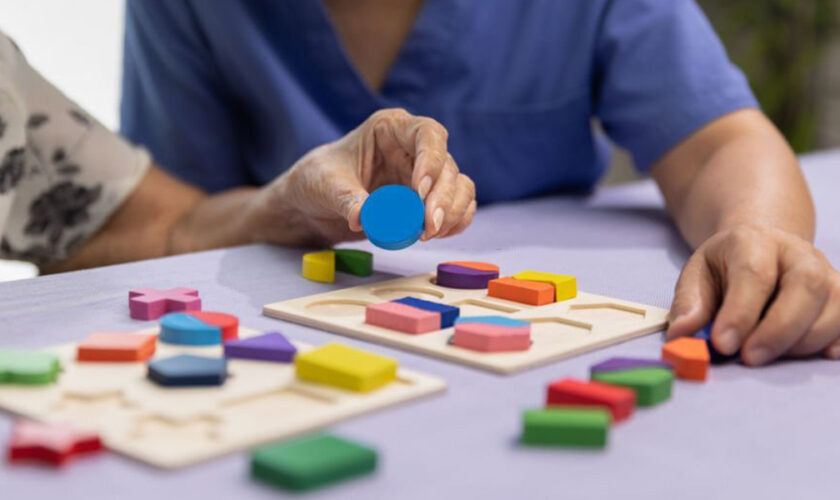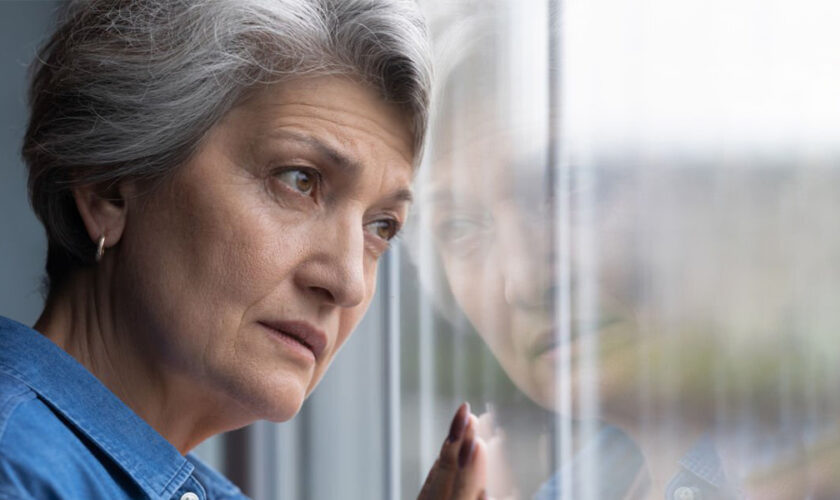Sundowners Syndrome, a complex condition affecting many seniors, brings forth a unique set of challenges for both individuals and their caregivers at Athulya Assisted Living. In this blog, we delve into the facts surrounding Sundowners Syndrome, debunk common misconceptions, and offer practical tips for providing compassionate care and treatment.
Understanding Sundowners Syndrome:
Sundowners Syndrome, also known as “late-day confusion,” is a term used to describe a cluster of symptoms that typically worsen in the late afternoon and evening. It is prevalent among seniors, especially those with dementia or Alzheimer’s disease, and can manifest as increased confusion, anxiety, agitation, and mood swings during these hours. Understanding the facts about Sundowners Syndrome is crucial for effective care and treatment.
Facts About Sundowners Syndrome:
Association with Cognitive Decline:
Sundowners Syndrome often coexists with conditions like dementia and Alzheimer’s disease, revealing a complex interplay between cognitive health and the temporal manifestations of the syndrome. While the exact mechanisms linking the two remain a subject of ongoing research, it is clear that seniors with cognitive impairments are more susceptible.
Environmental Triggers:
Changes in lighting, routines, and the transition from daylight to darkness can significantly impact individuals experiencing Sundowners Syndrome. Shadows, insufficient lighting, or alterations in the daily schedule become catalysts for heightened confusion and anxiety during the late afternoon and evening hours.
Temporary Nature of Symptoms:
This phenomenon is typically a transient experience, peaking during the late afternoon and evening hours and subsiding with the arrival of morning light. Despite the intensity of confusion, anxiety, and agitation, Sundowners Syndrome often exhibits a temporary nature, offering a glimmer of respite for affected individuals and their caregivers.
Common Misconceptions About Sundowners Syndrome:
Exclusive to Dementia Patients:
While it is frequently associated with cognitive decline, seniors without underlying cognitive impairments can also experience Sundowners Syndrome. Various factors, such as medications, sleep disorders, and changes in the environment, can contribute to its occurrence in a broader elderly population. Recognising that Sundowners Syndrome transcends the confines of dementia is vital for our caregivers and healthcare professionals to ensure comprehensive and inclusive care strategies tailored to the diverse needs of seniors navigating this complex phenomenon.
A Standalone Medical Condition:
Rather than existing independently, Sundowners Syndrome is a cluster of symptoms that often accompanies existing conditions, most notably dementia or Alzheimer’s disease. Understanding that it is a manifestation rather than a distinct ailment is crucial for our caregivers and healthcare professionals. By recognizing Sundowners Syndrome as a complex facet within the broader spectrum of senior health, caregivers can adopt more holistic approaches to support those grappling with its challenges.
Medication as the Sole Solution:
While medications may be prescribed to alleviate symptoms in certain cases, a holistic and multifaceted approach is essential. Non-pharmacological interventions, such as environmental adjustments, establishing consistent routines, and providing emotional support, play a crucial role in addressing the complexities of Sundowners Syndrome. So, relying solely on medications overlooks the importance of creating a supportive living environment and understanding the individual triggers contributing to the syndrome.
Tips for Care and Treatment:
Establish a Consistent Routine:
A predictable daily schedule contributes to regulating the circadian rhythm, minimising disruptions that can trigger heightened symptoms during the late afternoon and evening hours. Regular meal times, engaging activities, and a structured bedtime routine can provide a sense of predictability and security for individuals grappling with Sundowners Syndrome. This intentional focus on routine not only fosters a stable environment but also empowers our caregivers to create a comforting and familiar atmosphere, reducing the impact of environmental triggers associated with the syndrome.
Optimise the Living Environment:
Ensuring that the living space is well-lit and free of shadows that could induce confusion is paramount. Nightlights strategically placed in hallways and bedrooms can provide a sense of security during the evening hours. Adequate lighting not only reduces environmental triggers but also fosters a safe and comfortable atmosphere.
Encourage Exposure to Natural Light:
Natural light plays a crucial role in regulating the sleep-wake cycle, and seniors benefit from ample exposure during the day. Open curtains and allowing sunlight into living spaces contribute to a balanced circadian rhythm, potentially mitigating the severity of symptoms associated with Sundowners Syndrome. By integrating natural light exposure into daily routines, our caregivers and healthcare professionals positively impact the overall well-being of individuals navigating the complexities of this syndrome, fostering a healthier and more synchronised relationship with their environment.
Limit Stimulants Before Bedtime:
Seniors experiencing this phenomenon benefit from a calming and conducive atmosphere in the evening. Restricting stimulants such as caffeine and sugar during the late afternoon and evening hours helps to create a tranquil environment, minimising factors that could contribute to heightened confusion and restlessness. By adopting a thoughtful approach to evening routines and avoiding activities that may be overstimulating, our caregivers and healthcare professionals contribute to a smoother transition into the night, reducing the impact of stimulants on individuals grappling with Sundowners Syndrome.
Promote Relaxation Techniques:
Introducing calming activities before bedtime, such as gentle music, aromatherapy, or relaxation exercises, contributes to a serene environment conducive to a peaceful night’s rest. Creating a soothing bedtime routine helps seniors unwind and mentally prepare for sleep, alleviating the heightened anxiety and agitation often associated with the late afternoon and evening hours. By integrating relaxation techniques into the daily routine, our caregivers and healthcare professionals offer personalised and comforting interventions that enhance the overall well-being of those navigating Sundowners Syndrome.
Stay Patient and Calm:
As the symptoms intensify during the late afternoon and evening, our caregivers play a crucial role in providing reassurance and support. Responding with a gentle and understanding demeanour, using a soothing tone, and offering comfort without adding stress are essential components of managing Sundowners Syndrome episodes. Patience becomes a powerful tool in navigating the challenges posed by heightened confusion and anxiety, fostering a compassionate and therapeutic environment for seniors and their caregivers alike.
Consult with Healthcare Professionals:
It is crucial for our caregivers to collaborate with physicians, geriatric specialists, and mental health professionals to gain insights into the individualised needs of seniors experiencing this phenomenon. Our healthcare professionals offer valuable guidance in tailoring care strategies, prescribing appropriate medications if necessary, and addressing any underlying health issues contributing to Sundowners Syndrome. By fostering a collaborative approach that integrates the expertise of our healthcare professionals, caregivers ensure a holistic and informed care plan at Athulya Mind and Memory Care, enhancing the overall well-being of seniors grappling with the challenges posed by Sundowners Syndrome.
Consider Behavioural Therapies:
Behavioural interventions, such as cognitive-behavioural therapy (CBT) or reminiscence therapy, can provide effective tools for seniors and their caregivers. These therapies aim to address cognitive challenges, reduce anxiety, and enhance overall emotional well-being. Engaging in activities that stimulate positive memories and emotions can significantly impact the frequency and intensity of Sundowners Syndrome symptoms. By incorporating behavioural therapies into the care plan, our caregivers and healthcare professionals offer personalised and holistic strategies that go beyond medication, fostering a supportive and enriching environment for seniors experiencing this complex phenomenon.
Evaluate Medication Regimens:
While medications may be prescribed to alleviate symptoms, it is essential to regularly assess their effectiveness and potential side effects. Collaborating with healthcare professionals allows our caregivers to make informed decisions about medication adjustments or alternatives, tailoring the regimen to the unique needs of each individual. Striking the right balance between pharmacological and non-pharmacological interventions is key in optimising the overall care plan.
Thus, navigating Sundowners Syndrome requires a nuanced and personalised approach. Dispelling misconceptions, incorporating non-pharmacological strategies, and seeking professional guidance create a comprehensive care framework. Our caregivers play a pivotal role in providing a supportive environment, fostering understanding, and embracing patience. By recognising the transient nature of symptoms and adopting a holistic mindset, we enhance the well-being of those affected by Sundowners Syndrome at Athulya Senior Care, ensuring compassionate and effective care tailored to individual needs.
Information: This blog is for informational purposes only and should not be considered as a substitute for any treatment or diagnosis. Seek professional help in case of any emergency. Athulya is not responsible for any consequences.











